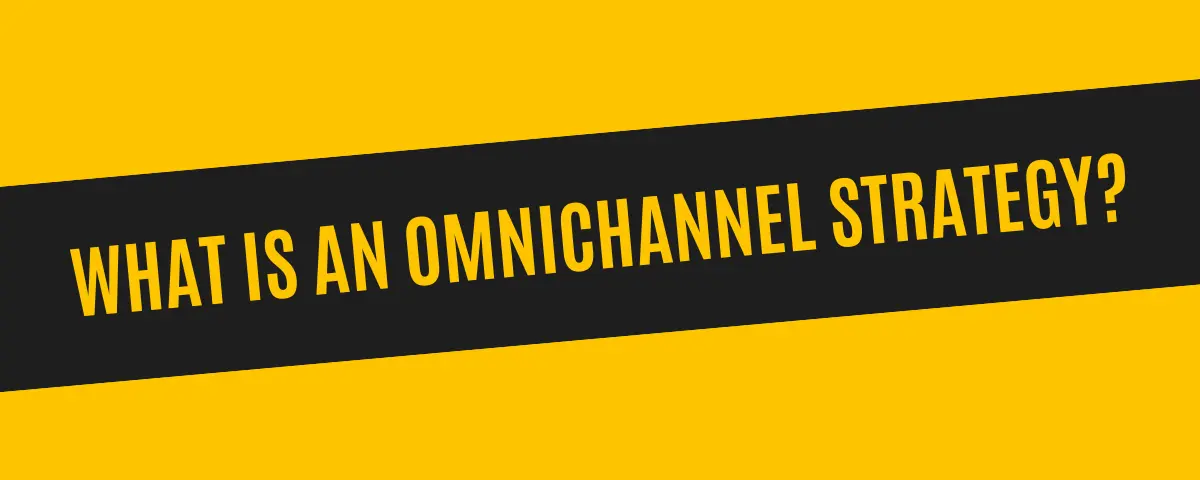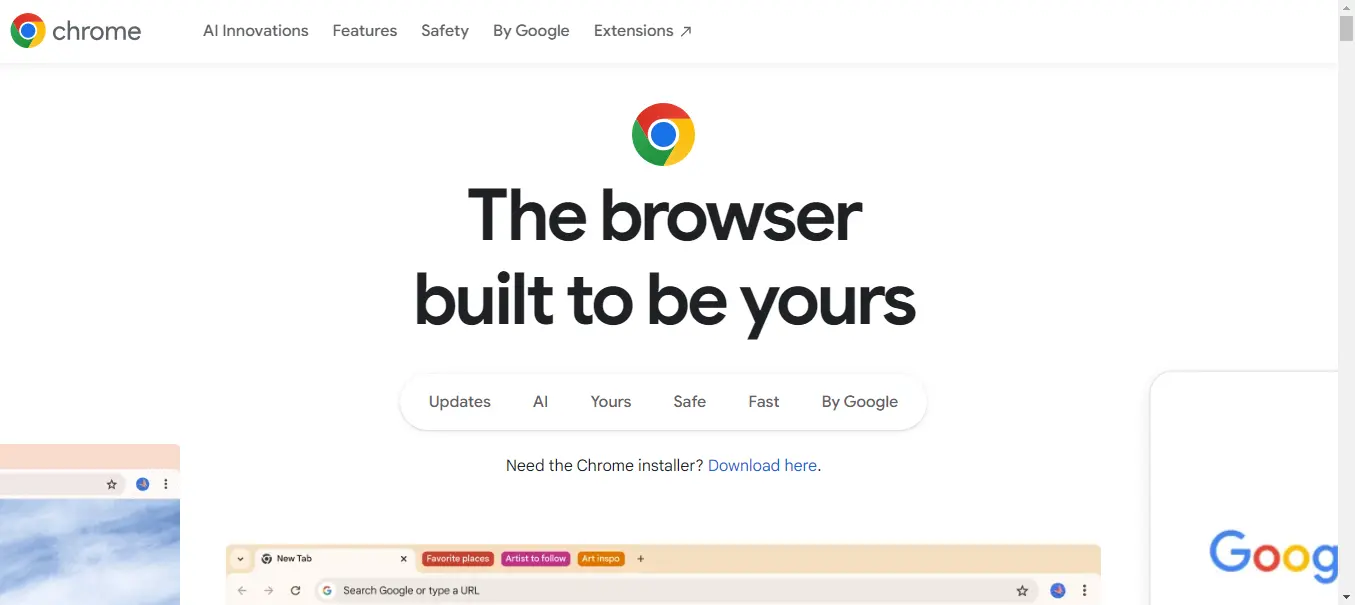Omnichannel marketing is a key strategy for businesses to improve customer interaction and provide a seamless brand experience. It connects different marketing channels, both digital and physical, to create a unified customer journey.
As a business owner, you should take advantage of this marketing strategy to reach a wider audience across various channels.
This post will explain what omnichannel marketing is, why it’s important, and give real-world examples of how it has been used successfully in today’s competitive market.
What is Omnichannel Marketing?
Omnichannel marketing is a customer-centric approach that focuses on integrating all marketing channels to provide a unified and consistent experience for customers across various touchpoints, both online and offline.
Get 50% Discount to Master ALL Aspects of Digital Marketing That Can Earn You $2,500 - $5,000 a month (Even if you are a complete beginner!)
Our students that intentionally implement what they learn from our digital marketing course make back the entire course fee within a single month or more after completing our course because our course gives them many income generating options with unlimited earning potential with no age or location barrier. The best part is no technical skills are required.
An opportunity to change your lifestyle and make money working from anywhere in the world. The results our students get from our digital marketing course prove this could be applied to any market or country and that it is designed for any skill level and work background.
*By signing up, you agree to our privacy policy and terms of service.
It is not just about being present on multiple platforms; it’s about creating a cohesive strategy that seamlessly connects all these touchpoints. By doing so, brands can deliver a consistent and engaging experience that enhances customer engagement and fosters brand loyalty.
What is an Omnichannel Marketing Strategy?
An omnichannel marketing strategy is an approach that integrates multiple marketing channels to create a seamless and consistent customer experience across various touchpoints. This strategy aims to provide customers with a unified journey, where they can interact with a brand through online and offline channels like websites, social media, email, physical stores, and more.
When you leverage omnichannel marketing, businesses can deliver personalized messaging, engage customers effectively, and drive customer loyalty by ensuring a cohesive brand experience regardless of the channel customers choose to interact with.
Benefits of Omnichannel Marketing
Better Customer Insight
Businesses collect and analyze data from multiple sources to understand their customer’s behaviour and preferences. This data helps them create more personalized and impactful marketing campaigns that meet the specific needs of their target audience.
Consistent Brand Messaging
Omnichannel marketing seamlessly connects different marketing channels to create a consistent brand experience for customers. Integrating all platforms builds trust and strengthens brand recognition as customers encounter a unified message regardless of the channel they interact with.
Brand Consistency and Accountability
When a business presents a uniform brand identity across all its communication channels, it strengthens brand awareness and builds customer trust. Additionally, it ensures that businesses remain responsible to their customers by consistently meeting expectations.
Smoother Customer Journey
When marketing reaches customers consistently through various platforms (omnichannel), it creates a smooth experience that improves their interactions with a business. This leads to happier and more dedicated customers who stay loyal to the brand
Increased Revenue
When you seamlessly integrate marketing efforts across all channels, omnichannel marketing enables swift conversions. Customers can switch channels during the buying journey without losing track. When you provide a consistent experience across channels, it builds stronger customer relationships and lower marketing expenses. This combination impacts revenue increase, lowers costs, and attracts loyal customers leading to an improved return on investment.
Multichannel Marketing vs. Omnichannel Marketing: What’s the difference?
Multichannel marketing uses different channels separately to connect with customers. Each channel offers a unique shopping experience. Omnichannel marketing, on the other hand, combines all available channels into one seamless journey. It takes into account customer preferences and delivers a consistent message across all channels at once, creating a more integrated shopping experience.
In multichannel marketing, each channel functions independently, targeting specific goals. In contrast, omnichannel marketing seamlessly integrates all channels. This integration ensures coordinated communication and advertising across various touchpoints. Multichannel strategies divide channels into distinct experiences, primarily focusing on promoting the product or service. Omnichannel strategies, on the other hand, prioritize the customer experience. It aims to deliver a consistent and unified experience, regardless of the channel used for interaction.
Multichannel marketing uses one message and action for all channels. However, omnichannel marketing uses different messages for different parts of the customer journey, requiring more resources for personalized strategies and advertising models. The choice between multichannel and omnichannel depends on factors like the business model, resources, customers, and goals. It is important to match the marketing strategy with the audience and business aims.
How to Build an Omnichannel Marketing Strategy
Define your target audience
Identify and understand your target audience, including their demographics, preferences, behaviors, and the channels they frequent. This will help you determine the most relevant channels to focus your efforts on.
This in-depth understanding enables you to choose the most relevant channels to engage with your audience, ensuring that your messaging resonates and connects with them on a personal level.
Map Customer Journey
To enhance customer experience, businesses should identify the platforms, channels, and devices customers use regularly. Understand customer interactions from their point of view and ensure a seamless experience across all touchpoints. Develop innovative touchpoints. This could encompass social media interactions, website visits, email marketing engagement, and potentially even in-store experiences.
Identify relevant channels
Based on your target audience and customer journey mapping, select the channels that align with your customer’s preferences and behavior. Common channels include websites, social media, email, mobile apps, physical stores, and direct mail. Choosing the right mix of channels ensures a seamless and cohesive experience for customers across touchpoints, enhancing engagement and driving conversions effectively in the omnichannel setup.
Ensure channel integration
Integrate your marketing efforts across all chosen channels to create a seamless experience. This means delivering consistent branding, messaging, and campaigns across all touchpoints, while also allowing customers to switch between channels without disruption.
Performance Monitoring
Identify metrics that measure the effectiveness of your omnichannel strategy aligned with overall business goals. You can also use tools to gather data from multiple channels to gain a comprehensive view of customer behavior. Pay close attention to reports and analytical insights to identify areas for improvement and optimization. Continuously adjust and refine your omnichannel strategy based on data analysis to address issues and drive growth.
Personalize Services
Use the collected data to personalize and tailor your marketing messages, offers, and experiences for each customer or customer segment across all channels. When you analyze customer data, businesses can identify their customers’ pain points, desires, and motivations. This enables them to craft tailored experiences that create a memorable and positive impact. An example of this could be equipping in-store representatives with tablets. This allows them to provide personalized assistance, instantly access information, and enhance the overall shopping experience.
You can create a comprehensive omnichannel marketing strategy by acquiring and honing your digital marketing skills through taking courses on digital marketing to understand the different channels, how they work and how you can implement them in your strategy.
Examples of Omnichannel Marketing
Some examples of successful omnichannel marketing strategies implemented by various brands include:
Google Chrome
Google Chrome, a browser from Google, exemplifies the benefits of an omni-channel approach. When users sign in, their browsing history and activities are automatically synchronized across all their devices. This allows them to seamlessly access tabs open on different devices, regardless of the device they’re using.
This synchronized experience significantly enhances user convenience, contributing to Google Chrome’s dominant market share in the Internet browser industry. Chrome demonstrates the importance of integrating omni-channel principles not only in marketing, sales, and customer service but also in the design of the product itself.
Starbucks
Starbucks’ success in omnichannel marketing hinges on its Starbucks Reward App. This app acts as the central hub, allowing customers to effortlessly switch between in-store visits, online orders, and loyalty rewards. Real-time synchronization across these channels ensures a seamless experience, fostering customer loyalty and enhancing their overall interactions with the brand.
Amazon
Amazon leads the retail industry in providing a seamless shopping experience across multiple channels. Through its mobile app and website, customers can seamlessly synchronize their shopping carts while signing in. Additionally, Amazon offers comprehensive customer support options, empowering customers to select the communication method that best suits their preferences. Amazon’s physical presence includes its Amazon Go storefronts. By scanning the app upon entering, customers can select their items and simply leave the store without the hassle of checkout or payment.
Barnes and Noble
Despite the decline of physical bookstores, Barnes & Noble continues to provide a seamless shopping experience across all its platforms, including its physical stores, and online platforms (Nook app, mobile website, and desktop website). Customers can expect a consistent and immersive experience regardless of the channel they choose to access the store’s offerings.
Omnichannel Marketing Platforms
To succeed in omni-channel marketing, it’s crucial to have the right platform. Allocating resources effectively across multiple platforms is essential. Omni-channel marketing platforms facilitate seamless operations across all channels, enhancing the effectiveness of your campaigns.
Here are three platforms designed for this purpose:
ActiveCampaign
ActiveCampaign is recognized as an exceptional omnichannel marketing platform for 2024. It empowers businesses to deliver tailored and cohesive experiences across various channels. ActiveCampaign focuses on delivering personalized and relevant communication to enhance customer satisfaction, loyalty, and engagement, recognizing the significance of personalized messages in building strong customer relationships.
HubSpot
HubSpot is a comprehensive inbound marketing, sales, and customer service platform that enables businesses to manage their omnichannel marketing efforts. It provides tools for website management, blogging, social media marketing, email marketing, lead management, and analytics. HubSpot‘s omnichannel capabilities allow marketers to create personalized experiences across multiple channels, automate workflows, and track customer interactions throughout the buyer’s journey.
Zoho
Zoho’s marketing platform combines multiple channels to help marketers design and run campaigns, organize customer information, and gauge marketing performance. It focuses on providing customized experiences by delivering messages and campaigns tailored to each audience through different channels like websites, emails, social media, and more.
Conclusion
Omnichannel marketing has emerged as a game-changer and It goes beyond just being present on various platforms. Instead, it focuses on creating a unified and remarkable experience for customers at every touchpoint. This comprehensive approach fosters stronger customer bonds, personalizes their shopping journeys, and helps businesses hit their marketing targets.
To embrace omnichannel marketing means prioritizing a seamless and consistent experience that empowers customers and boosts brand loyalty. As the path of marketing leads towards omnichannel strategies, adopting this approach keeps your brand at the forefront of innovation.
FAQs
What is the primary purpose of Omnichannel Marketing?
Omnichannel marketing is all about creating a seamless, one-stop shop experience for your customers across all channels, online and offline.
What are the four pillars of Omnichannel Marketing?
Omnichannel marketing rests on four pillars:
- Knowing your audience
- Seamless integration
- Consistent messaging
- Data-driven decisions.
It’s like having a map, a smooth highway, a clear voice, and a compass to guide your customers on their journey.
What are the 3 aspects of Omnichannel Marketing?
Omnichannel marketing succeeds with three essential elements:
- Seamless Experience: Customers effortlessly navigate through various channels without encountering any hiccups.
- Individualized Approach: Messages are tailored to each customer, cultivating a more personal connection.
- Data-Informed Insight: Customer data serves as a compass, guiding marketing strategies and improving their effectiveness.
Key digital channels for omnichannel marketing
Key digital channels for omnichannel marketing include
- Websites
- Video
- Social media platforms
- Email campaigns
- Mobile apps
- Online advertising
These channels play a crucial role in engaging with customers across various touchpoints, ensuring a seamless and consistent experience as customers interact with the brand.
More Posts
What is Experiential Marketing and Why Does it Matter
What is Conversational Marketing? A Beginner’s Guide
The Complete Guide to Event Marketing: Benefits + Strategies









